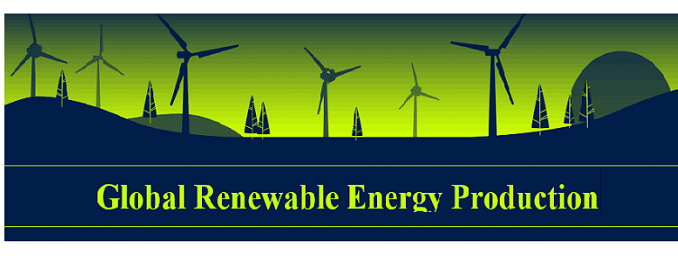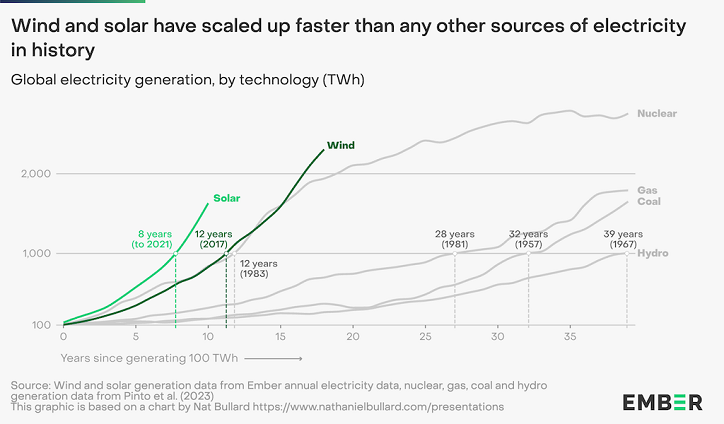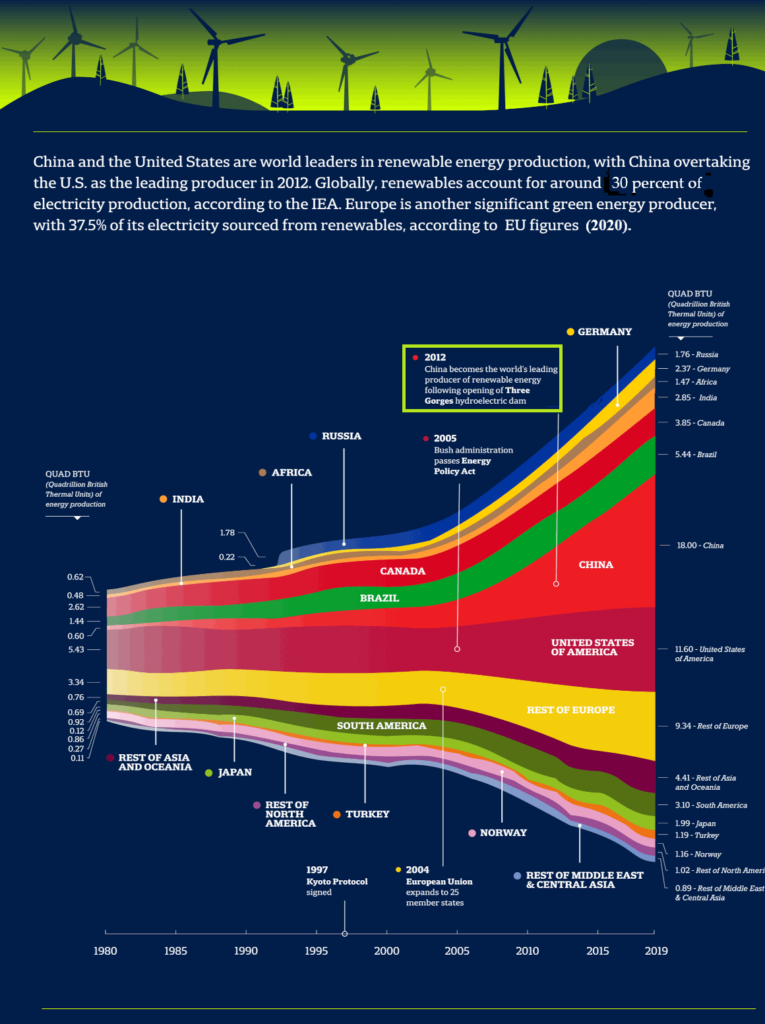
Wind and solar are growing faster than any other sources of electricity in history, according to new analysis from thinktank Ember.
Clean capacity expansion
The report says that wind and solar are now growing fast enough to exceed rising demand, meaning there will be a peak in fossil fuel electricity generation – and emissions – from this year.
As a result, Ember says in its latest annual review of global electricity data that a “new era of falling fossil fuel generation is imminent”.
Renewables met a record 30% of global electricity demand in 2023 and emissions from the sector would already have peaked if not for a record fall in hydropower, the analysis says.
The rise of wind and solar has been stemming the growth of fossil fuel power, which would have been 22% higher in 2023 without them, Ember says. This would have added around 4bn tonnes of carbon dioxide (GtCO2) to annual global emissions.
No other sources of electricity generation have ever grown from 100TWh per year to 1,000TWh faster than solar and wind, Ember says. These took just eight and 12 years respectively, as shown in the figure below.
This sits far ahead of gas generation at 28 years, coal at 32 years and hydropower at 39 years. (Nuclear also grew from 100TWh to 1,000TWh over 12 years, the Ember figure shows, but tailed off more quickly than wind).
Nevertheless, the growth of clean electricity sources needs to accelerate to meet the global goal of tripling renewables by 2030, Ember says.
Meeting this goal would almost halve power sector emissions by the end of the decade, and put the world on a pathway aligned with the 1.5C climate target set in the Paris Agreement.

Global electricity generation technology expansion by technology (TWh), showing the time it has taken for key technologies to grow from 100TWh to 1,000TWh. Source: Ember.
Tripling renewables and what comes next
At the COP28 UN climate conference in Dubai in 2023, all countries agreed to contribute to the tripling of global renewable energy capacity by 2030, in what was seen as a “crucial” step for 1.5C.
Although the COP28 outcome did not include numerical targets, Ember says tripling renewables would mean adding 14,000TWh of annual renewable generation by 2030, compared to 2022 levels. In 2022, renewables accounted for 8,599TWh of the 28,844TWh of electricity generated globally.
After accounting for rising electricity demand, it says this tripling would help cut fossil fuel generation by 6,570TWh, or 37%. With highly-polluting coal power bearing the brunt of this reduction, power sector emissions would fall even faster, by 45% in 2030, it says.
Already, the expansion of renewable energy has slowed fossil fuel growth substantially, as the graph below shows.

Global electricity generation from fossil fuels (black), wind and solar (green) and other clean energy technologies (blue) between 2000 and 2023 in TWh. Source: Ember.
Meeting the tripling goal would mean some 60% of global electricity supplies coming from renewable sources by 2030.
This would mark a dramatic shift from current renewable shares. In 2023, 102 countries had a renewable generation share of 30% or higher, up from 98 in 2022.
Global Renewable Energy Production

Graphic adapted from: Visual Capitalist
(https://www.visualcapitalist.com/cp/global-energy-consumption-and-production-since-1980/)
Source: Edited extract from Carbon Brief, 8 May 2024.
Full articles available at following links